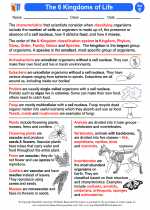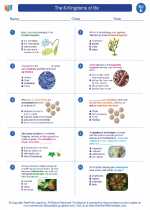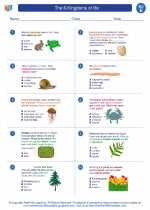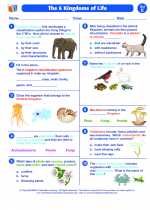The 6-Kingdoms of life -> chloroplasts
Chloroplasts
Chloroplasts are organelles found in plant cells and eukaryotic algae. They are responsible for the process of photosynthesis, which is the conversion of light energy into chemical energy in the form of glucose.
Structure of Chloroplasts
Chloroplasts have a double membrane structure, with an outer membrane and an inner membrane. Inside the inner membrane, there is a fluid-filled space called the stroma. Within the stroma, there are thylakoid membranes, which are arranged in stacks called grana.
Function of Chloroplasts
The main function of chloroplasts is to carry out photosynthesis. During this process, chlorophyll, a green pigment found in the thylakoid membranes, captures light energy. This energy is used to convert carbon dioxide and water into glucose and oxygen. The glucose is used as a source of energy for the plant, while the oxygen is released into the atmosphere as a byproduct.
Importance of Chloroplasts
Chloroplasts are critical for the survival of plants and other photosynthetic organisms. They are responsible for producing the oxygen we breathe and are the foundation of the food chain, as they provide energy for plant growth, which in turn sustains other organisms.
Study Guide:
- Describe the structure of a chloroplast.
- Explain the function of chloroplasts in a plant cell.
- Discuss the role of chloroplasts in the process of photosynthesis.
- Explain the importance of chloroplasts for the survival of plants and other organisms.
- Compare and contrast chloroplasts with other organelles, such as mitochondria.
These questions will help you understand the structure, function, and significance of chloroplasts in plant biology.
[Chloroplasts] Related Worksheets and Study Guides:
.◂Science Worksheets and Study Guides Fifth Grade. The 6-Kingdoms of life

 Activity Lesson
Activity Lesson
 Worksheet/Answer key
Worksheet/Answer key
 Worksheet/Answer key
Worksheet/Answer key
 Worksheet/Answer key
Worksheet/Answer key
 Worksheet/Answer key
Worksheet/Answer key
 Vocabulary/Answer key
Vocabulary/Answer key
 Vocabulary/Answer key
Vocabulary/Answer key
 Vocabulary/Answer key
Vocabulary/Answer key
 Vocabulary/Answer key
Vocabulary/Answer key
